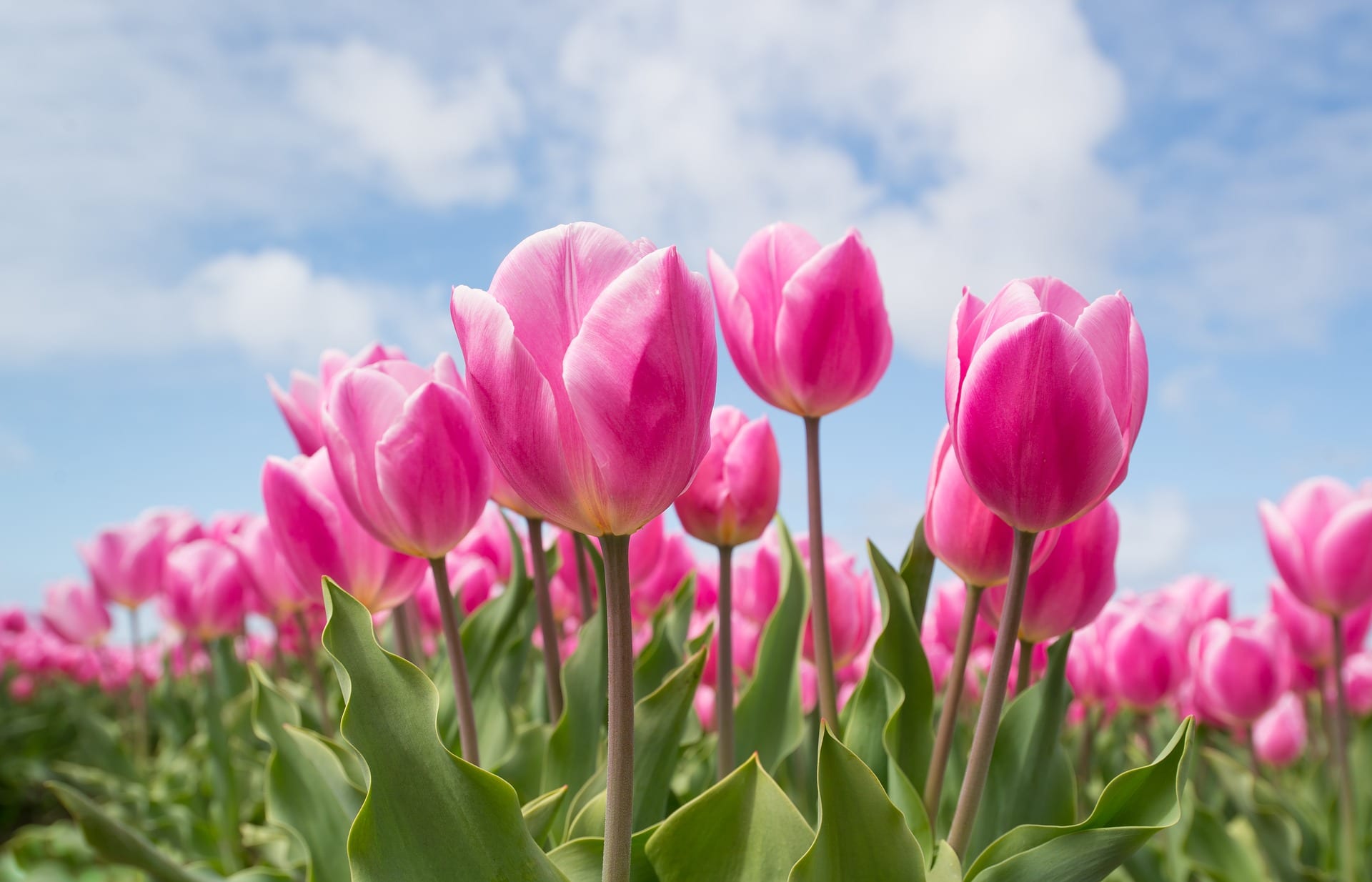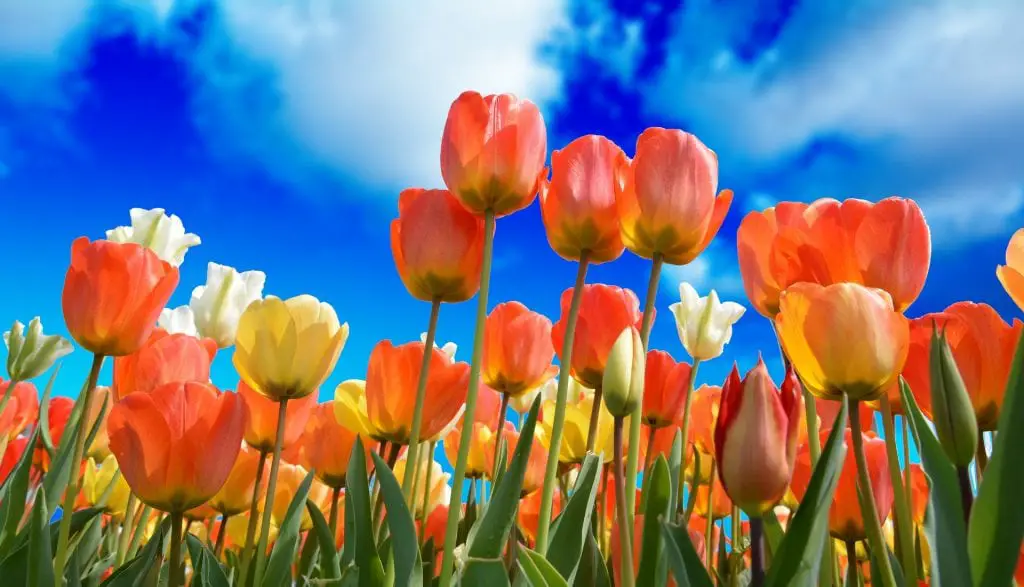
The song, “Tulips from Amsterdam,” is not very accurate about the origin of tulips. Tulips didn’t originate from the Netherlands at all. Nonetheless, we’ll get to that later. For now, it must be mentioned that tulips are the most archetypal flowers of spring. They are seen everywhere in this blooming season. If you happen to witness a wedding in spring, you can be sure that all the flower arrangements will have tulips as the primary flowers.
Tulips have been, still are, and always will be one of the most popular flowers in the world. At a singular time in history, their popularity soared so high that their prices hit the roof. At the time, their value was estimated as higher than most houses!
There are some strange and amazing facts about tulips and tulip meanings that you will find weird, yet interesting. Read on to find out some unexpected truths about the flower of everyone‘s dreams.
The name and origins
The name for this flower originated from The Persian word for “turban”. The word in Persian is “delband“. Apparently, the country where tulips were grown originally was Turkey. It was traditional to wear turbans there, and people would embellish their turbans with a tulip stem. Also, since the flower resembles a turban somewhat, one more association with the headdress was drawn upon. Historically, the flower is said to have its birth in Central Asia. Some historians believe that the origin of the tulip meaning can be traced back to the Ottoman Empire, when the rulers took great pride in wearing a tulip on their signature turbans.
It was only during the 16th century that tulips were exported to Holland. At some point in time, during the 1950s, a book was written about them by the author, Carolus Clusius, and after this, the flowers became widely known. The author himself had them planted in his garden, and he claimed that they were so popular that they were stolen. Due to this fact, Holland is recognized for the growth of tulips, among other flowers that it produces.
Tulip “mania”

In 1841, a Scottish author, Charles Mackay, wrote an account of how people in Holland seemed to have gone berserk over tulips in the 1600s. Tulips were gaining in popularity in this period, and the extraordinary demand for the flowers made prices skyrocket. Some folks bought tulip seeds and bulbs, spending their life’s savings on them, in the hope they would be able to sell them later on at a profit. This tulip “investment” was common with nobles, farmers, maids and people from all strata of society who saw these exotic flowers as a great investment. People clamored to buy them at any cost. Tulip meaning as just ordinary flowers changed for a long time to come.
This was just a phase. When it came to be known that these flowers had no resale value, the majority of Dutch society that bought them had to face utter disappointment. The economy took a hit, as so many people had invested their money in the blooms. So many people, from the lesser rungs of society, suffered the most, as they had nothing left to live on. People who were prosperous before, like merchants were reduced to poverty. Several nobles couldn’t retain their vast households as they had spent most of their earnings on the flowers.
The idea that tulip “mania” caused a great economic downturn in Dutch society has been refuted by historians like Anne Goldgar. She claims that this is a myth and people like to believe it was true because it makes for a great read. Goldgar says that Mackay’s record of events in Holland in the 1600s was not really based on any hard evidence. Instead, she says, Mackay relied on a bunch of pamphlets and poems that were more like propaganda than real proof.
You can eat them
Tulips are edible flowers. No one likes to eat them because they are so beautiful. People would rather admire them than consume them. Nonetheless, during the Second World War, when there was a scarcity of food, people from humbler backgrounds would make tulip bread for consumption. Tulips can be used as a replacement for onions and you can make wine from tulips. One thing you should know – they don’t taste as great as they look!
Relations
A close relative of the tulip is the lily. Tulips are related to the family of lilies called Liliacae. This family of flora contains not only lilies and tulips but onions, garlic and asparagus as well.
Black tulips
These are not actually “black”. Tulips that are called “black” are really a deep dark shade of purple, so dark that they appear black, especially in the shade. Such a tulip is known as the “Queen of the Night”.
The perfect shape
Tulips are known to have petals that form in perfect symmetry. These are one of the few flowers that have this feature. Another intriguing fact is that tulips have three petals and three sepals. The sepals and petals are the same size and shape, and this gives people the impression that tulips have six petals.
Trending tulips
Tulips are trending. They are a source of wonder for many people, old and young alike. They start their existence as bulbs, and not as seeds only. This is a unique fact. They also produce their own nutrients, unlike many other flowers. You can “encourage” a tulip to bloom early by placing it in the refrigerator for twelve hours straight. Today, the tulip meaning and what it symbolizes is valuable for the world at large.
